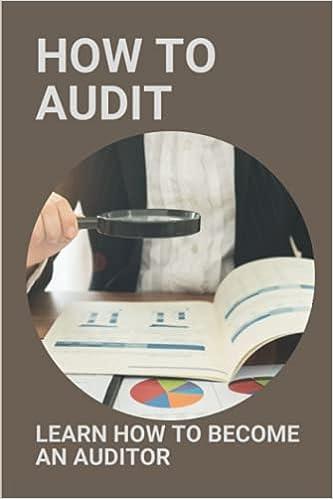Question
3. The solution to this problem requires time value of money calculations. Reference to Tables 9-1 through 9-4 in the text is necessary to complete
3. The solution to this problem requires time value of money calculations. Reference to Tables 9-1 through 9-4 in the text is necessary to complete the calculations.
Winston wins the lottery. He wins $20,000 per year to be paid to him for 10 years. The state offers him the choice of a cash settlement now instead of the annual payments for 10 years. If the interest rate is 6%, what is the amount the state will offer for a settlement today?
a. $147,200 b. $200,000 c. $154,440 d. $175,000
4. A cereal company includes one premium coupon in every cereal box. Upon returning 10 such coupons to the company, a customer will be sent a free cereal bowl. In a recent year, the company sold 200,000 boxes of cereal for $1 a box. It is estimated that 20% of the coupons will be returned. If the cereal bowls cost the company $3 each, what amount of liability for premium redemptions must be recorded by the company?
a. $ 6,000 b. $ 12,000 c. $200,000 d. $ 24,000
5. Interest payable on a loan becomes a liability:
a. at the maturity date. b. when the borrowed money is received. c. as it accrues. d. when the note payable is issued.
6. Current liabilities are defined as those liabilities which will be satisfied
a. within one year or within the operating cycle, whichever is shorter. b. by the end of the operating cycle. c. within one year. d. within one year or within the operating cycle, whichever is longer.
7. Bonds in the amount of $100,000 and a life of 10 years were issued by the Focus Company. If the face rate is 6% and interest is paid semiannually, what would be the total amount of interest paid over the life of the bonds?
a. $ 60,000 b. $120,000 c. $ 30,000 d. $ 6,000
8. The bond issue price is determined by calculating the
a. present value of the stream of interest payments and the future value of the maturity amount.
b. future value of the stream of interest payments and the future value of the maturity amount.
c. future value of the stream of interest payments and the present value of the maturity amount.
d. present value of the stream of interest payments and the present value of the maturity amount.
9. When bonds are sold for less than the face amount, this means that the
a. maturity value will be less than the face amount.
b. maturity value will be greater than the face amount.
c. bonds are sold at a premium.
d. face rate of interest is less than the market rate of interest.
10. Dali Company has 15,000 shares of stock authorized at January 1. Dali issues 4,500 shares to the stockholders during the year and then the company repurchases 1,500 shares as treasury stock. Based on this information, how many shares are outstanding at December 31?
a. 15,000 b. 18,000 c. 4,500 d. 3,000
11. Which of the following is an account in stockholders' equity?
a. Dividends Payable b. Loss on Sale of Equipment c. Retained Earnings d. Net income
12. Which of the following statements is true with regard to contributed capital?
a. Preferred stock is stock that has been retired.
b. It is very unlikely corporations may have more than one class of stock outstanding.
c. The outstanding number of shares is the maximum number of shares that can be issued by a corporation.
d. The shares that are in the hands of the stockholders are said to be outstanding.
13. Authorized stock represents the
a. maximum number of shares that can be issued.
b. number of shares that have been sold.
c. number of shares that are currently held by stockholders.
d. number of shares that have been repurchased by the corporation.
14. If Llama Company has paid out more in dividends than it has had in net income, over the lifetime of the company, then the balances in the Stockholders Equity should show: a.
a negative balance in the Retained Earnings account.
b. a positive balance in the Retained Earnings account. c.
a negative balance in the Common Stock account.
d. a positive balance in the Common Stock account.
15. A company would repurchase its own stock for all of the following reasons except
a. it needs the stock for employee bonuses.
b. it wishes to make an investment in its own stock.
c. it wishes to prevent unwanted takeover attempts.
d. it wishes to improve the company's financial ratios.
Step by Step Solution
There are 3 Steps involved in it
Step: 1

Get Instant Access to Expert-Tailored Solutions
See step-by-step solutions with expert insights and AI powered tools for academic success
Step: 2

Step: 3

Ace Your Homework with AI
Get the answers you need in no time with our AI-driven, step-by-step assistance
Get Started


